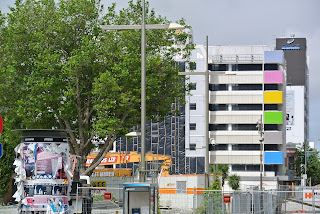Calling all Teachers! Please continue to engage the USNA PSP through questions from your classes. I hope to engage as many educators as possible with interactive Q and A sessions! Contact me at woods@usna.edu to participate.
Christchurch School is an Episcopal boarding and day school
located near Saluda, VA on the Rappahannock River. Our science curriculum is an
integrated science with a combination of basic concepts and practical
applications. Our sophomore class focuses on chemistry. We have just completed
a river survey of the Rappahannock River from the Chesapeake Bay to the
headwaters in the mountains at Chester Gap. We ran turbidity, pH, nitrates,
phosphate, DO, conductivity, salinity and conductivity and sample temperature.
We have been following your posts and wonder the following:
1.
Did you run similar tests?
We will be running tests for snow density, salinity of water at
different
depths, as well as different halide ions in the snow and ice
(Cl-
and Br- tests currently, more to follow). Some select samples will
be
tested for methane, metals, and stable isotopes of oxygen and
hydrogen.
Additionally, frost flower and ice core samples were plated on
different
types of agar to grow bacterial colonies. A biology professor
at
the Academy is looking for photosynthetic extremophiles with a
specific
lipid structure that can be used to create biofuels. As of now,
he
has only found different colonies of halophiles, but the growth on
the
colonies is young so we're hoping more will come from the samples we
took.
2.
Would you be willing to share your results with our class. We would like to
compare them.
We
will not have any results until this summer or next fall. I can
forward
you the results then for you to use with your class next year.
Unfortunately,
as a result of other time constraints with research, we
won't
be able to run most tests until this summer.
3.
What other chemical tests did you run or will you run on the ice core samples?
The
ice cores were originally going to be used to test for methane
concentrations
in the ice. As the ice forms, pockets filled with methane
are
also produced. Unfortunately, we were not able to obtain enough core
samples
to run these tests so we have not determined yet what we will
test
for instead. Again, this is something I can pass forward to you
once
we have decided. The portion of the ice core at the surface/water
interface
is being used to grow bacterial colonies.
4.
Do the high school students in Barrow conduct chemical tests on their
environment? Which ones if they do?
I
do not believe high school students in Barrow conduct any chemical
tests
on their environment. Scientists are constantly in the area during
research
on the environment so I believe most of their knowledge comes
from
the scientists who pass through and share their knowledge. I do not
know
this for sure but this is what I gathered from our experiences with
the
students. Here is POC info for 2 teachers from Barrow H.S. if you would like to contact them directly dana.hilchey@nsbsd.org and matthew.conforti@nsbsd.org.
 After
I got back from Antarctica I had a full day to myself in New Zealand. I
decided to go on a bus tour of Christchurch and the surrounding areas.
It was a three hour tour that had a much better outcome than Gilligan's
Island. I got to see the remnants of Cathedral Square, the Canterbury
Museum, Botanical Gardens, Port of Lyttelton, Redcliffs and Sumner
Beach. It was a great way to see the surrounding area in a short amount
of time. It gave me a very clear perspective on just how damaging the
earthquakes over the past couple years have been. The city is severely
damaged and will take years in order to repair and rebuilt.
After
I got back from Antarctica I had a full day to myself in New Zealand. I
decided to go on a bus tour of Christchurch and the surrounding areas.
It was a three hour tour that had a much better outcome than Gilligan's
Island. I got to see the remnants of Cathedral Square, the Canterbury
Museum, Botanical Gardens, Port of Lyttelton, Redcliffs and Sumner
Beach. It was a great way to see the surrounding area in a short amount
of time. It gave me a very clear perspective on just how damaging the
earthquakes over the past couple years have been. The city is severely
damaged and will take years in order to repair and rebuilt. 















































